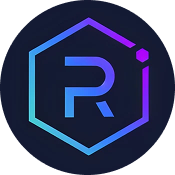Navigating the complex waters of DeFi requires more than just understanding the basics; it demands a deep dive into the mechanisms that power yield optimization and trading execution. Yearn Finance and GMX exemplify two sides of the decentralized finance spectrum—one focused on maximizing returns through automated yield strategies, the other on offering decentralized derivatives trading with leverage. This blog provides an in-depth, technical comparison of these platforms, shedding light on their architectures, functionalities, and ideal user bases to empower crypto enthusiasts and investors in making informed decisions.
Short on time? Jump to Yearn Finance vs GMX Comparison
Understanding Yearn Finance and GMX ?
Yearn.Finance, launched in 2020 by Andre Cronje, is a pioneering DeFi protocol built on Ethereum that automates yield farming across multiple protocols like Aave, Curve, and Compound. It aggregates liquidity pools to optimize yields via a process known as profit switching, allowing users to earn the highest possible returns without manual intervention. Its native token, YFI, governs platform upgrades and strategic decisions, emphasizing decentralization and community participation.
GMX, on the other hand, is a decentralized derivatives exchange that facilitates perpetual trading on Layer 2 solutions like Arbitrum and Avalanche. It emphasizes non-custodial trading of perpetual contracts, allowing traders to speculate on price movements with leverage, without risking custody of their assets. The GMX token acts as the utility and governance token, enabling community-driven proposals and decisions. Its architecture supports high liquidity and low slippage, making it a significant player in the DeFi derivatives space.
While Yearn Finance focuses on maximizing yield through automated strategies, GMX specializes in providing a decentralized trading environment that offers leverage and high liquidity for perpetual contracts. Both platforms exemplify core DeFi principles—trustless operation, community governance, and composability—yet serve distinct user needs within the ecosystem.
Understanding their underlying architectures, strategic focuses, and user engagement models is crucial for investors aiming to diversify their DeFi portfolios. This comparison explores these aspects in detail, offering insights into how each platform operates and the advantages they provide to their respective user bases.
Key Differences Between Yearn Finance and GMX
Core Functionality
- Yearn Finance: Yearn.Finance is primarily a yield aggregator that automates the process of allocating funds across various DeFi protocols to maximize returns. Its vaults and strategies dynamically shift assets to sources offering the best yields, minimizing the need for manual oversight. The platform’s architecture emphasizes composability, allowing for the integration of new strategies and automation of complex financial workflows. Its key strength lies in optimizing passive income streams for users seeking consistent growth.
- GMX: GMX operates as a decentralized derivatives exchange, enabling traders to speculate on cryptocurrency prices using perpetual contracts with leverage. Its core functionality revolves around providing a high-liquidity, low-slippage trading environment supported by an innovative multi-asset pool. GMX emphasizes real-time trading, margin management, and decentralized governance, catering to active traders and liquidity providers interested in derivatives markets rather than passive yield farming.
Underlying Technology
- Yearn Finance: Yearn.Finance leverages Ethereum smart contracts with a modular architecture, including vaults, strategies, and a governance token (YFI). Its recent development, YearnV3, introduces a robust core, smart modules, and a periphery layer, enabling greater security, flexibility, and decentralization. The platform's strategies utilize complex algorithms for yield optimization, incorporating cross-protocol integrations and risk management features, ensuring adaptable and resilient investment strategies.
- GMX: GMX’s infrastructure is built on Layer 2 solutions like Arbitrum and Avalanche, providing fast, low-cost trading experiences. Its architecture includes a multi-asset pool (GLP), staking mechanisms, and a decentralized order book. GMX employs an autonomous market-making model, where liquidity is pooled and managed transparently, allowing traders to execute leveraged trades with minimal slippage. Its governance token enables community proposals, further decentralizing decision-making.
User Interaction
- Yearn Finance: Yearn.Finance users connect their wallets to deposit assets into vaults, which then automatically allocate funds according to predefined strategies. The platform requires minimal active management, making it suitable for passive investors. Governance participation involves staking YFI tokens to propose or vote on protocol changes, emphasizing community-driven development and decentralization.
- GMX: GMX users interact through a seamless interface that allows trading, staking, and liquidity provision. Traders can open leveraged positions directly on the platform, while liquidity providers earn rewards by staking GMX tokens or contributing to the GLP pool. The platform supports multi-chain operations with cross-chain asset management, catering to active traders seeking real-time execution and high liquidity.
Risk Management
- Yearn Finance: Yearn employs a variety of strategies to mitigate risks, including diversification across protocols, automated rebalancing, and security audits. The platform’s modular architecture aims to isolate vulnerabilities, and ongoing updates enhance decentralization and security. However, past exploits, such as the 2021 DAI lending pool hack, highlight the importance of continuous security improvements.
- GMX: GMX manages risk through decentralized order books, collateralization, and liquidation mechanisms. Its use of Layer 2 solutions reduces counterparty risk and slippage, while community governance helps oversee protocol upgrades and security measures. The platform’s transparent codebase and multi-chain support aim to provide a secure environment for high-leverage trading.
Governance Model
- Yearn Finance: Yearn’s governance revolves around the YFI token, which holders can stake to vote on proposals affecting protocol upgrades, fee structures, and strategy deployments. The recent move towards YearnV3 emphasizes decentralization, allowing permissionless creation of strategies and enhanced community involvement in decision-making processes.
- GMX: GMX’s governance is token-based, with GMX token holders voting on proposals related to protocol parameters, fee models, and future chain deployments. The governance process is community-driven, with notable investors and individual stakeholders contributing to strategic directions. This model ensures the platform remains adaptable and aligned with user interests.
Yearn Finance vs GMX Comparison
| Feature | ✅ Yearn Finance | ✅ GMX |
|---|---|---|
| Primary Function | Automated yield farming and profit optimization across DeFi protocols. | Decentralized trading and leveraged perpetual contracts. |
| Blockchain Infrastructure | Ethereum and multi-chain vault architectures. | Layer 2 solutions like Arbitrum and Avalanche. |
| User Engagement | Passive investing via vault deposits with governance participation. | Active trading, staking, and liquidity provision with community governance. |
| Risk Profile | Automated strategies with diversification; past security incidents noted. | On-chain collateralization and liquidation; low slippage trading environment. |
| Governance Token | YFI, with proposals and voting on platform upgrades. | GMX token, enabling community proposals and decision-making. |
| Target Audience | Passive investors seeking yield optimization and DeFi diversification. | Active traders and liquidity providers interested in derivatives and leverage. |
Ideal For
Choose Yearn Finance: Ideal for investors looking for automated yield strategies with community governance.
Choose GMX: Best suited for traders seeking decentralized, leveraged derivatives trading.
Conclusion: Yearn Finance vs GMX
Yearn Finance and GMX exemplify two distinct yet complementary facets of the DeFi ecosystem—passive yield optimization and active derivatives trading. Yearn’s modular architecture and automation make it a powerhouse for investors aiming to maximize returns with minimal oversight, though security considerations remain critical. GMX’s emphasis on decentralized, leveraged trading on Layer 2 solutions offers traders high liquidity and low slippage, catering to more active market participants.
Choosing between these platforms depends largely on user goals: passive income seekers may find Yearn’s strategies more aligned with their needs, while active traders and liquidity providers may prefer GMX’s dynamic trading capabilities. Both platforms continue to evolve, pushing the boundaries of DeFi innovation and decentralization. Ultimately, understanding their core functionalities and strategic focuses enables investors to diversify their DeFi exposure effectively, harnessing the strengths of each to optimize their crypto journey.






